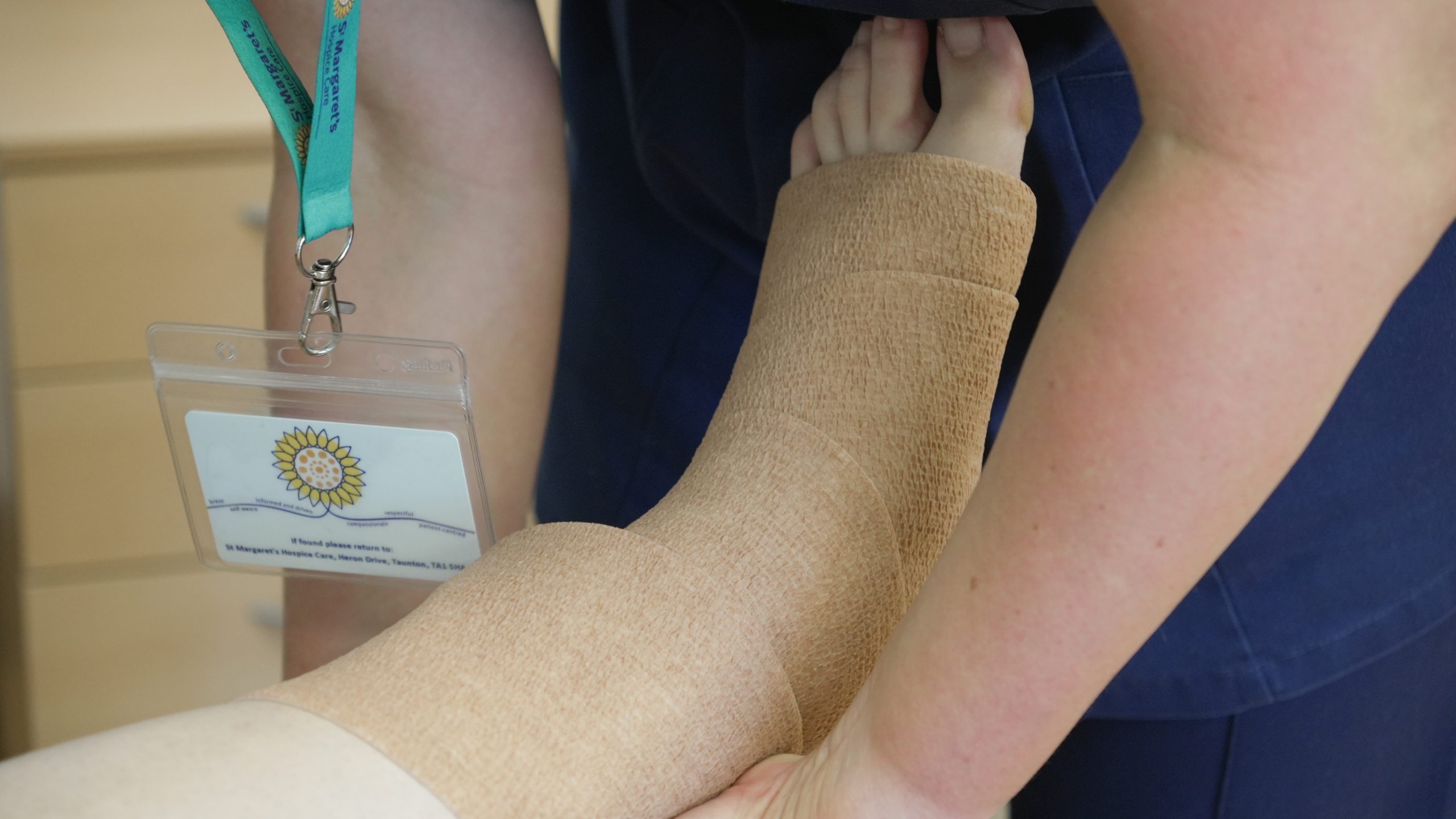What is Intensive Treatment?
Intensive treatment is known as Decongestive Lymphatic Therapy (DLT). This treatment is given by a therapist who has had specialist training. Intensive treatment on a limb may include bandaging treatment, a special massage by hand or machine, exercise and care for the skin.
If the swelling is on the centre parts of the body, special massage and the use of support garments may make up treatment.
Why is the treatment done?
The therapist will advise a course of DLT if the swelling presents problems regarding the size, shape, the quality and “feel” of the skin or the presence of any swelling on your trunk. For these reasons it is advisable to reduce swelling and its problems quickly, using this special form of treatment.
How long does the treatment last?
The treatment session will last from 30 minutes to 1.5 hours, and will be continued between 2 and 5 times a week for 2-4 weeks. Although this may seem like a long time, this way of providing treatment enables the therapist to reduce the problems of swelling relatively quickly.
Where does the treatment take place?
The intensive stage of treatment takes place at St Margaret’s Hospice Care where all the equipment and specialist staff are available.
What does the bandaging treatment involve?
The bandaging treatment is made up of a number of layers of padding and a firm outer bandage. The bandages will feel firm when they are first applied. As the day goes by the bandages will loosen. There are different types of bandages and your nurse will determine the most suitable for your problem.
Why is exercise important?
In order for the bandages to help fluid drainage it is important that you exercise while wearing bandages. Your therapist will give you a set of exercises to do when wearing bandages. You are advised to use your limb as normally as possible.
Skin care
Each time the bandages are taken off you will have an opportunity to wash your limb. Before the bandages are reapplied you will be shown how to moisturise your skin with cream. If some areas of your skin need special treatment the therapist may use special cream or dressings.
Massage
A special form of massage known as Manual Lymph Drainage (MLD) may be used as part of DLT. This is a special form of massage performed by the
therapist, which you will find very relaxing and enjoyable. Sometimes your nurse will prescribe a treatment with a lymphassist machine instead of MLD.
What will I be expected to do while I am having DLT?
You will be expected to carry out the advice regarding exercise and movement between treatments.
It will also be helpful to continue with your Simple Lymph Drainage massage to help fluid drain away.
When you come to treatment you may be asked to take off and roll up the bandages that are being reapplied. Please would you take the dirty bandages home to wash. They should be washed on a gentle wash, patted dry in a towel and dried flat. Some bandages are not reusable and are cut off.
What do I do if I have discomfort from the bandaging?
At first the bandages will feel strange, heavy and firm, however they should not cause you any pain. If you do have any discomfort, try taking paracetamol. Should the discomfort continue or if you have pins and needles or numbness from the bandages, first try exercising your limb.
If symptoms continue remove the top layer of bandages. If this does not resolve the problem then take all the bandages off and inform the lymphoedema clinic on 01823 346950 or 01935 709150 (between 8:00am and 6:00pm) or call the 24 hour helpline on: 0845 070 8910.
Further things to look out for:
- Should your fingers/toes look blue then move your limb and do the exercises you have been given, your fingers/toes should turn pink again, if not please remove the bandages
- Should your fingers/toes turn white then remove the bandages and inform the lymphoedema clinic
- Should you experience unusual shortness of breath remove the bandages and contact your GP
- If you experience severe itching then remove the bandages and inform the lymphoedema clinic
- We advise that you should not drive whilst in bandages, as your car insurance may be You will be asked to sign a disclaimer before bandaging.
What happens after an intensive treatment?
The therapist will monitor and measure your progress regularly and decide when it is time to move to the next stage of therapy.
At this point the course of bandaging will stop and you will be supplied with a rigid sleeve or stocking to wear. You will be expected to wear this garment day and night for 6 weeks. If you cannot commit to this, your nurse may decide that bandaging treatment is inappropriate.
Once both you and the therapist are happy with your progress you will be offered a future maintenance appointment.

